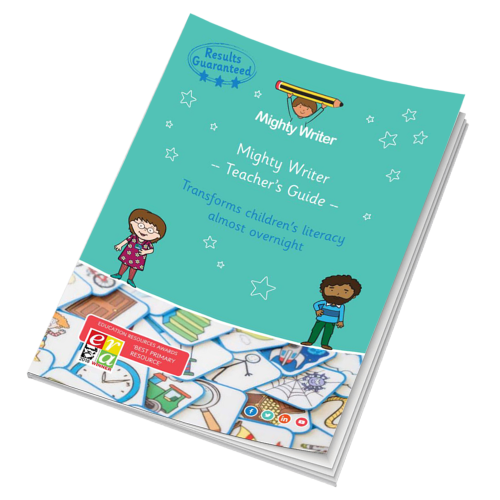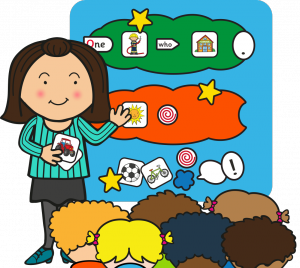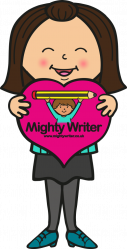Key Stage One Literacy
10 essential considerations for teaching KS1 Literacy (typically pupils aged 5-7):
1. Individualised Instruction
Tailor your teaching methods to meet the individual needs of each pupil. Recognise and address variations in learning styles, abilities, and learning pace.
2. Multisensory Approaches
Use a variety of sensory experiences, such as visual aids, hands-on activities, and auditory cues, to engage different learning modalities and enhance understanding.
3. Phonics Emphasis
Place a strong focus on phonics instruction, helping children to understand the relationship between letters and sounds. This foundational skill is crucial for early reading and writing.
4. Literacy-rich Environment
Create a classroom environment that fosters a love for reading and writing. Provide access to a diverse range of age-appropriate books, writing materials, and literacy-related activities.
5. Active Participation
Encourage active participation through discussions, group activities, and interactive games. This helps develop oral language skills and promotes a positive attitude towards literacy.
6. Differentiated Instruction
Differentiate instruction based on the varied abilities and needs of your pupils. Offer additional support for struggling learners and enrichment opportunities for those who excel.
7. Integration of Technology
Incorporate technology tools and resources to enhance literacy learning. Educational apps, interactive whiteboards, and multimedia content can make the learning experience more engaging.
8. Cultural Relevance
Select literature and activities that reflect the diverse backgrounds and cultures of your pupils. This promotes inclusivity and helps children to connect with the material.
9. Assessment for Learning
Use ongoing formative assessments to monitor pupils progress and adjust your teaching strategies accordingly. Regularly assess reading levels, comprehension, and writing skills to inform instructional decisions.
10. Parental Involvement
Foster a strong partnership with parents to support literacy development at home. Provide resources, reading recommendations, and updates on their child's progress. Encourage parents to engage in literacy activities with their children.
Remember that these considerations should be adapted based on the specific needs and context of your classroom. Flexibility and responsiveness to your pupils' evolving needs are key to effective literacy instruction in Key Stage 1.

Find out how to transform your childrens' literacy results almost overnight.
Download Our Free Teachers' Guide

Here are some common questions asked about KS1 Literacy, followed by some useful resources to help build your learning environment!
Why are Sensory Tools Important for Key Stage One Children When Learning?
 Ever seen fidget spinners in the classroom? That's the world of sensory tools! But why are they popping up everywhere, especially for Key Stage One learners? It's not just a trend – sensory tools unlock a hidden power for young minds.
Ever seen fidget spinners in the classroom? That's the world of sensory tools! But why are they popping up everywhere, especially for Key Stage One learners? It's not just a trend – sensory tools unlock a hidden power for young minds.
Imagine a brain swimming in a sea of sounds, sights, and touches. For some, it's overwhelming. Sensory tools act like lifebuoys, helping children navigate this sensory soup and focus on learning. It's not magic, it's science!
Here's how sensory tools empower Key Stage One learners:
- Brain Builders: These tools stimulate neural pathways, building stronger connections for processing information. Think of it as giving the brain a gym workout to boost learning and memory.
- Focus Champions: Feeling overwhelmed by noise or fidgety energy? Sensory tools can be the calm in the storm, helping children filter out distractions and stay laser-focused on the task at hand.
- Confidence Boosters: When learning feels easy and fun, confidence soars! Sensory tools make learning engaging and accessible, paving the way for success and a positive attitude towards school.
- Emotional Regulators: Big feelings got you down? Sensory tools can be anchors, providing calming input that helps children manage stress and anxiety, creating a safe space for learning.
- Enhance learning: Sensory tools can enhance learning by providing a multi-sensory experience. For example, an interactive mat can help children learn about shapes and colours by engaging multiple senses, such as touch and sight.
But it's not a one-size-fits-all solution! Every child has unique sensory needs. The key is finding the right tools that work for them. From squishy stress balls to fidget cubes, the possibilities are endless!
Why is Teaching Phonics Essential at Key Stage 1?
Phonics is a fundamental aspect of reading and writing, and it plays a critical role in helping children become confident and competent readers.
Understanding Phonics
 Phonics is a method of teaching reading and spelling by focusing on the relationship between sounds and letters.
Phonics is a method of teaching reading and spelling by focusing on the relationship between sounds and letters.
It involves teaching children how to identify and manipulate the sounds in spoken language and connect them to written letters or letter combinations. By learning the sounds of individual letters and letter blends, children can decode words and recognise patterns in written text.
The Power of Phonics - The Benefits:
- Improved Reading Skills: Phonics teaching equips children with the skills to decode words accurately, making them more fluent and efficient readers. By breaking down words into individual sounds, your pupils can read unfamiliar words with confidence and understand the meaning behind the text.
- Enhanced Spelling Abilities: Phonics teaching helps pupils understand the rules and patterns of spelling. They learn how to segment words into sounds and apply the appropriate letters to represent those sounds. This knowledge gives them a solid foundation for spelling words correctly and expanding their vocabulary.
- Increased Vocabulary: Phonics teaching not only helps children read and spell words, but it also expands their understanding of language. As pupils become proficient in decoding words, they encounter new vocabulary regularly, which enriches their overall language skills and comprehension.
Effective Phonics Instruction Strategies
Here are some effective strategies to implement in your classroom:
Explicit Teaching:
Ensure that phonics teaching is explicit and systematic. Teach the relationship between sounds and letters explicitly and provide ample opportunities for practice and reinforcement. Use a variety of multisensory activities, such as songs, games, and manipulatives, to engage pupils and make learning enjoyable.
Progression and Continuity:
Plan your phonics teaching in a logical and sequential manner. Start with simple sounds and gradually progress towards more complex letter combinations. Ensure continuity by building upon previously learned skills and regularly revisiting and reinforcing previously taught phonemes.
Integration with Reading and Writing:
Integrate phonics teaching with reading and writing activities. Encourage pupils to apply their phonics knowledge while reading books and writing sentences. Provide opportunities for guided and independent reading, enabling pupils to practice their decoding skills in context.
Differentiation:
Recognise that pupils have different abilities and learning styles. Differentiate your phonics teaching by providing additional support or challenge based on individual needs. Use assessment data to identify areas of weakness and tailor your teaching accordingly.
Parental Involvement:
Engage parents in the phonics learning process. Provide them with resources and activities to reinforce phonics skills at home. Consider hosting workshops or sending home regular updates to keep parents informed about the importance of phonics and how they can support their child's progress.
Phonics instruction is a crucial component of literacy development. By teaching children the sounds and patterns of words, we empower them to become proficient readers and confident writers. Let us continue to prioritise phonics teaching in our classrooms and equip our pupils with the necessary skills for a lifelong love of reading and learning.

Find out how to transform your childrens' literacy results almost overnight.
Discover Mighty Writer
Book our amazing online presentation from Emma, our Literacy Expert and founder. It's free, with no obligation!

Why is Instruction Writing so Important for Key Stage One Classes?
 Instruction writing is an important skill for young learners to develop, as it helps them to communicate clearly and effectively.
Instruction writing is an important skill for young learners to develop, as it helps them to communicate clearly and effectively.
Let’s explore why instruction writing is important, with some tips for teaching it, and a short guide along with some examples of instruction writing, fun activities and common mistakes to avoid.
The Importance of Instruction Writing for Key Stage One Classes
Instruction writing is an essential skill for KS1 students as it helps them to develop their writing and communication skills. Clear and concise instructions are needed in various aspects of life, whether it's following a recipe, assembling a toy, or giving directions.
By honing their instruction writing skills, children learn how to organise their thoughts, use descriptive language, and provide clear and logical steps for others to follow.
Tips for Teaching Instruction Writing
Teaching instruction writing to young learners can be a fun and engaging process.
Here are some tips to help you get started:
- Start with simple tasks: Begin by asking your pupils to write instructions for everyday activities they are familiar with, such as brushing their teeth or making a sandwich.
- Use visual aids: Incorporate visual aids such as diagrams, pictures, or props to help your pupils understand the steps involved in a task.
- Model good writing: Show them examples of well-written instructions and discuss the key features, such as clear steps, use of imperative verbs, and the importance of sequencing.
- Provide opportunities for practice: Allow your pupils to practice writing instructions in a variety of contexts, such as giving directions for a game or explaining how to solve a maths problem.
- Encourage peer feedback: Foster a supportive classroom environment where children can provide constructive feedback to each other, helping them to improve their instruction writing skills.
A short guide to Writing Instructions in KS1
Choose a task: Start by selecting a task that is familiar to them and suitable for their skill level.
Break it down: Divide the task into small, manageable steps. Encourage your pupils to think about the order in which the steps should be followed.
Use clear language: Ensure that the language used in the instructions is easy to understand and appropriate for the target audience.
Include imperative verbs: Use action words at the start of each step to clearly indicate what needs to be done.
Provide additional details: Include any necessary details or explanations to ensure that the instructions are comprehensive and easy to follow.
Organise the steps: Arrange the steps in a logical order, making it clear and easy for the reader to follow.
Proofread and edit: Encourage pupils to review their instructions for clarity, grammar, and spelling errors.
Share and evaluate: Have them exchange instructions with their peers and evaluate them based on clarity and ease of understanding.
Fun Activities to Practice Instruction Writing
Instruction writing can be made more enjoyable with these fun activities:
- Game instructions: Have your pupils create instructions for a game they enjoy playing, and then have their peers follow the instructions to play the game.

- Science experiments: Instruct them to write step-by-step instructions for a simple science experiment, such as making a volcano erupt or growing a plant from a seed.
- Arts and crafts projects: Ask your pupils to provide clear instructions for a fun arts and crafts activity, such as making a paper airplane or creating a collage.
- Recipe writing: Have them write detailed instructions for their favourite recipe, including measurements and cooking times. They can then swap recipes with their classmates and try making each other's dishes.
Common Mistakes to Avoid in Teaching Instruction Writing
While teaching instruction writing, it's important to address common mistakes that children may make. Here are a few to watch out for:
- Missing steps: Remind them to include all the necessary steps, even if they seem obvious.
- Unclear language: Emphasise the importance of using clear and precise language to avoid confusion.
- Disorganised steps: Encourage your class to arrange the steps in a logical order to make it easier for readers to follow.
- Omitting details: Remind children to include any additional details or explanations that might be needed.
- Writing in first person: Instruct your pupils to write instructions in the second person (e.g., "you"), rather than the first person (e.g., "I").
Examples of Instruction Writing in Key Stage One
Here are a couple of examples of instruction writing that you can share with your KS1 students:
|
Task |
Instructions |
|
Making a sandwich |
1. Take two slices of bread. 2. Spread butter on one side of each slice. 3. Place your choice of filling (e.g., ham, cheese) on one slice. 4. Put the two slices together. 5. Cut the sandwich in half. 6. Enjoy! |
|
Building a Lego house |
1. Sort the Lego pieces by colour and size. 2. Follow the instructions provided in the Lego box. 3. Start with the foundation and build upwards. 4. Connect the pieces securely. 5. Add any additional details or decorations. 6. Admire your Lego house! |
Assessment and Feedback for Instruction Writing
Assessing and providing feedback on instruction writing can help students improve their skills. Here are some ways to assess and provide feedback: 
- Checklists: Use checklists to assess whether children have included all the necessary elements in their instructions, such as clear steps, imperative verbs, and appropriate language.
- Peer feedback: Encourage children to exchange instructions with their peers and provide constructive feedback on clarity, organisation, and language use.
- Teacher feedback: Provide individual feedback highlighting areas of strength and areas for improvement. Offer suggestions for revision and provide examples of well-written instructions as models.
- Practice opportunities: Offer regular practice opportunities for your class to refine their instruction writing skills, allowing them to apply feedback and make improvements.
How Can I Help My Year One Child With Writing?
Writing is not only a fundamental skill, but it also helps children express their thoughts and ideas, enhances their communication skills, and fosters creativity. If you have a child in Year One and want to support their writing development, here are some top tips to help them on their journey.
Create a Writing Routine
Establishing a consistent writing routine can greatly benefit your Year One child. Set aside a specific time each day for writing activities.
This can be as short as 5 minutes initially and gradually increase as your child becomes more comfortable with writing. Consistency is key to building confidence and making writing a natural part of their daily routine.
Encourage Storytelling
Before your child puts pen to paper, encourage them to tell stories out loud! This helps them organise their thoughts and develop their imagination.
As they tell their stories, ask open-ended questions to prompt further details and help them expand their ideas. This process of oral storytelling lays a strong foundation for writing.
Provide a Variety of Writing Materials
Make writing fun and engaging by providing a variety of writing materials for your child. Apart from pencils and paper, you can also include colourful markers, gel pens, and even a small whiteboard. Letting them experiment with different materials helps keep their interest alive and adds an element of excitement to their writing activities.
Read Together
 Reading with your child is one of the most effective ways to support their writing development. When you read together, discuss the characters, settings, and plot. Encourage your child to make predictions or come up with alternative endings.
Reading with your child is one of the most effective ways to support their writing development. When you read together, discuss the characters, settings, and plot. Encourage your child to make predictions or come up with alternative endings.
This not only enhances their reading comprehension skills but also boosts their storytelling abilities, which directly translates into their writing.
Model Writing
Children learn by observing, so make sure to model writing for your child. Write in front of them, whether it's a shopping list, a letter, or a journal entry. Talk through the process, explaining your thinking and decision-making. This helps them understand that writing is a purposeful and meaningful activity and encourages them to follow suit.
Break Down Tasks
Writing can sometimes be overwhelming for young children. Break down the writing tasks into smaller, manageable steps.
For example, you can begin with brainstorming ideas together, then focus on organising those ideas into sentences and paragraphs. By breaking down the process, your child will feel more confident and less intimidated by the task at hand.
Provide Meaningful Feedback
When your child completes a writing task, provide them with meaningful feedback. Instead of just pointing out mistakes, focus on highlighting their strengths and the areas where they have improved. Encourage them to revise and edit their work, emphasising the importance of the writing process and continuous improvement.
Celebrate Achievements
Recognise your child's achievements and celebrate their progress in writing. Display their work proudly on the fridge or create a special folder to keep their written pieces. Celebrating their efforts boosts their self-esteem and motivates them to continue developing their writing skills.
Supporting your child with writing does not have to be daunting. By implementing these tips and fostering a positive writing environment, you can help your child develop a love for writing and build the necessary skills to excel in this important area of their education.
Remember, every child develops at their own pace, so be patient and provide them with the support and encouragement they need. With your help and guidance, your child will become a confident and capable writer.
Mighty Writer isn't the only way to improve Key Stage One Literacy...
Here are 10 more resources commonly
used in Key Stage 1 instruction:
1. Phonics Programs
Utilise structured phonics programs and resources that focus on teaching letter-sound relationships, decoding skills, and blending.
Examples include Jolly Phonics, Read Write Inc, and Letterland.
2. Reading Schemes
Incorporate levelled reading schemes designed for early readers. These often include books with progressive difficulty levels to support pupils as they build their reading skills.
Examples include Oxford Reading Tree, Bug Club, and Collins Big Cat.
3. Interactive Whiteboards
Make use of interactive whiteboards to engage children in interactive lessons. Interactive software and educational apps can be used to reinforce phonics, vocabulary, and comprehension skills.
4. Literacy Games and Puzzles
Integrate educational games and puzzles that focus on literacy skills. This could include word-building games, sight word bingo, and other interactive activities that make learning fun.
5. Picture Books and Storybooks
Stock your classroom with a diverse collection of age-appropriate picture books and storybooks. These serve as excellent resources for read-aloud sessions, comprehension activities, and building a love for reading.
6. Writing Centres
Set up writing centres with various writing materials, such as pencils, markers, paper, and themed writing prompts. Encourage children to engage in creative writing, journaling, and other writing activities.
7. Digital Literacy Resources
Integrate technology resources, such as educational apps, online reading platforms, and interactive e-books. These tools can provide additional practice and engagement with literacy skills.
8. Phonics and Sight Word Flashcards
Use flashcards to reinforce phonics sounds and common sight words. Flashcards are a versatile resource that can be used for individual or group activities, as well as for home practice.
9. Literacy Manipulatives
Employ hands-on manipulatives like letter tiles, magnetic letters, and word building blocks.These tangible resources help children practice spelling, phonics, and word formation in a tactile way.
10. Guided Reading Materials
Provide materials for guided reading sessions, including levelled readers, comprehension question cards, and guided reading lesson plans. These resources support differentiated instruction and small group reading activities.
Remember to adapt and customise these resources based on the specific needs and learning styles of your pupils. A well-rounded combination of these resources can contribute to a comprehensive and effective Key Stage 1 Literacy program.

How Can Mighty Writer Help?
If you want to take your pupils' writing skills to the next level, consider using Mighty Writer. This innovative resource is designed to make writing fun and engaging for young learners, while also developing their core literacy skills.
With Mighty Writer, your pupils will love writing and you'll love the results!
Want to learn more about the Mighty Writer resource? Download our free Teachers Guide by clicking the link below!

Real Results - Our Impact Evidence Report
We collected empirical evidence from 40 Mighty Writer schools - the results are in!
If you're looking for real results, from real schools - click below to view our 2023 impact evidence report!
This report provides a detailed analysis of survey data collected from 40 UK schools using Mighty Writer for 6 weeks or more in 2023.
The survey aimed to evaluate the impact of Mighty Writer over various aspects of literacy among KS1 children, EYFS and intervention in KS2.





























